The 30 Richest Neighborhoods in West Virginia: A Comprehensive Analysis

West Virginia’s economic landscape features distinct pockets of affluence that stand out against the state’s broader economic challenges. These wealthy neighborhoods span across various counties, from the Eastern Panhandle near Virginia and Maryland to established communities around major cities like Charleston, Morgantown, and Huntington.
The state’s richest neighborhoods showcase a diverse range of communities, from small affluent enclaves with exceptional household incomes to larger suburban areas that benefit from proximity to economic centers and educational institutions.
Geographic location plays a crucial role in determining wealth distribution, with many of the most prosperous areas positioned near state borders or major metropolitan centers.
These neighborhoods reflect varying economic drivers, including proximity to out-of-state employment opportunities, presence of higher education institutions, and access to natural resources industries that have historically shaped West Virginia’s economy.
Here are the 30 richest neighborhoods in West Virginia:
1. Holden, Logan County
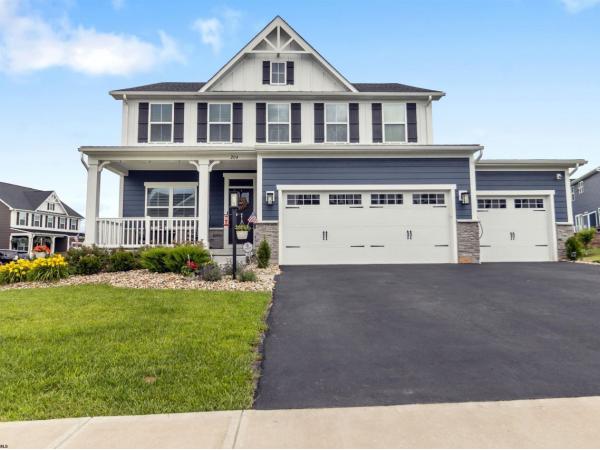
Holden stands as the richest city in West Virginia with an average household income of $259,196 as of 2023. This small census-designated place in Logan County has achieved remarkable affluence despite its modest size.
The community maintains a population of 561 residents according to recent data. The town has experienced population decline over the years, dropping from 876 in 2010 and 1,105 in 2000.
Holden offers residents a rural lifestyle surrounded by mountainous landscapes. Most residents own their homes and enjoy a close-knit community atmosphere.
The area is located in southwest West Virginia and covers 3.73 square miles of land. Logan County’s coal mining history dates back to 1905 when the Holden Mines opened alongside the arrival of the C&O Railroad.
Families predominantly populate this conservative community where peaceful living meets natural beauty.
2. Cheat Lake, Monongalia County
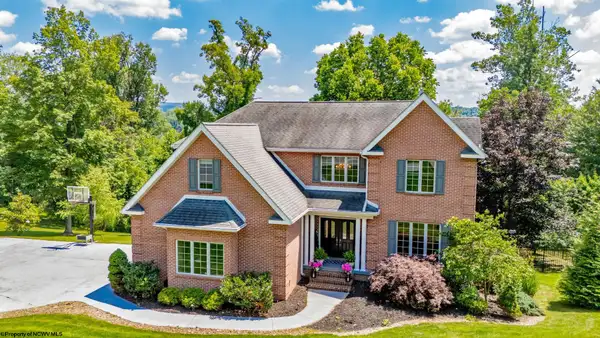
Cheat Lake stands as West Virginia’s wealthiest city with at least 5,000 residents. The community reports an average household income of $161,668 as of 2023.
The census-designated place houses 10,485 people according to current data. Its median household income reaches $111,379, creating a significant economic advantage over other West Virginia locations.
Located northeast of Morgantown, Cheat Lake offers convenient access to Interstate 68 and Route 119. The area surrounds the Cheat Lake reservoir, which formed in 1925 after a hydroelectric plant dammed the Cheat River.
The neighborhood ranks first among the best places to raise a family in Monongalia County. Its proximity to Morgantown provides residents with urban amenities while maintaining a suburban atmosphere.
Cheat Lake’s economic prosperity stems from its educated workforce and strategic location near West Virginia University.
3. Shenandoah Junction, Jefferson County
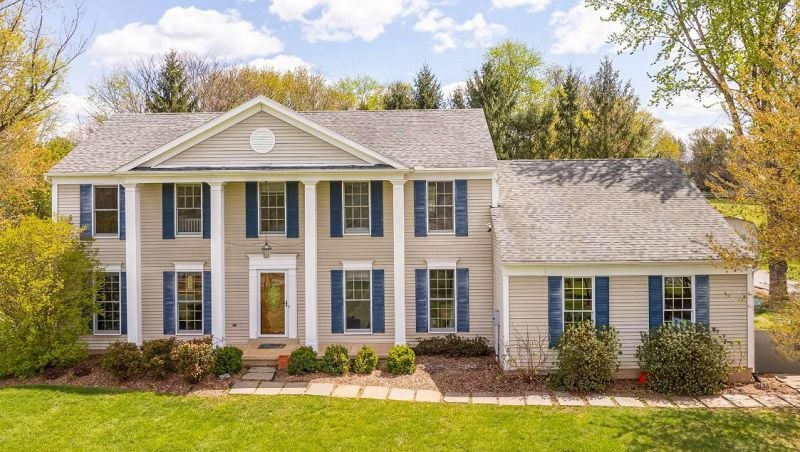
Shenandoah Junction stands as one of Jefferson County’s most prosperous communities. This census-designated place has a median household income of $76,044, reflecting the area’s economic strength.
The community sits strategically between Kearneysville and Charles Town along WV Route 9. This location provides residents with convenient access to both urban amenities and rural settings.
Real estate values demonstrate the area’s affluence, with a median listing price of $515,000. The housing market includes both established homes and new developments like Stonecrest by D.R. Horton.
Shenandoah Junction maintains a small-town feel with a population of 635 residents as of the 2020 census. The median age of 42.1 years indicates a mature, established community.
The area offers 85 land properties for sale, attracting buyers seeking custom home sites. Jefferson County’s overall median household income of $82,173 exceeds national averages, supporting the region’s wealthy reputation.
4. Charles Town, Jefferson County
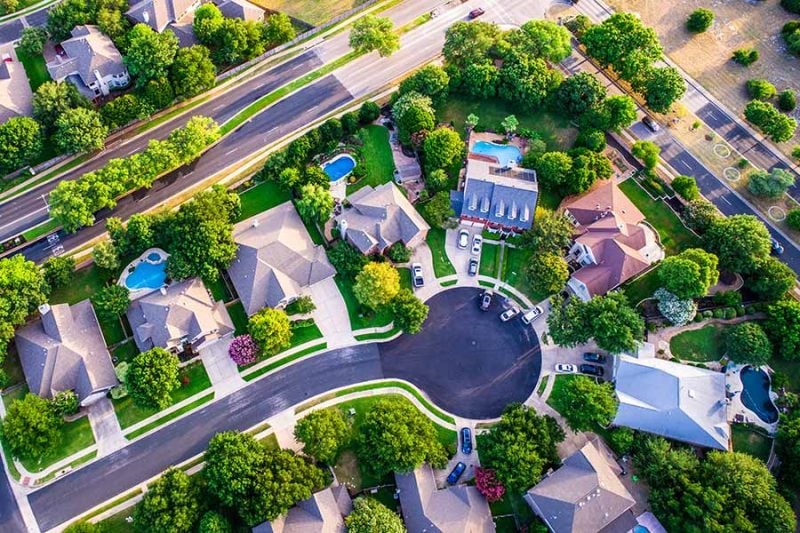
Charles Town stands as one of West Virginia’s most affluent communities with a population of 6,854 residents. The town was established in 1787 by Charles Washington, brother of George Washington.
Jefferson County, where Charles Town is located, ranks as the richest county in West Virginia. The county maintains a per capita income of $29,733 according to census data.
Charles Town offers residents a sparse suburban atmosphere where most people own their homes. The community provides easy access to major transportation routes including Route 9, Route 340, and Interstate 81.
The town features Hollywood Casino at Charles Town Races as a notable attraction. New construction developments continue to expand housing options with single-family homes and townhomes.
Charles Town’s proximity to the Washington D.C. metropolitan area contributes to its economic prosperity. The location allows residents to access urban employment opportunities while maintaining small-town living.
5. Bridgeport, Harrison County
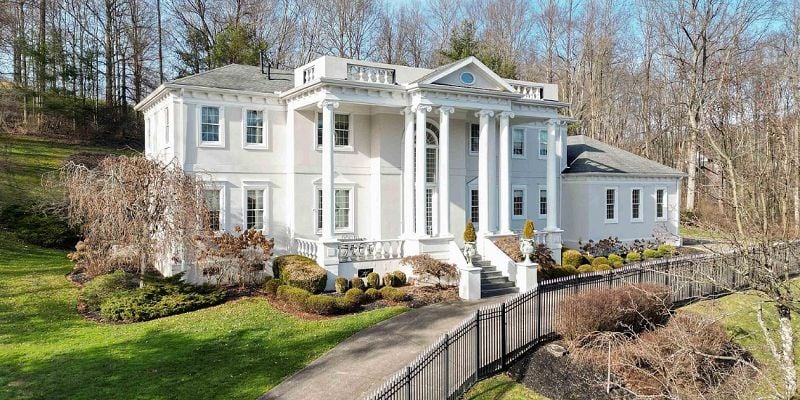
Bridgeport stands as one of West Virginia’s most prosperous communities, consistently ranking among the state’s wealthiest cities. The city ranks first out of 13 mid-size cities in West Virginia for median household income among municipalities with populations between 5,000 and 10,000 residents.
Located in Harrison County along the I-79 corridor, Bridgeport has experienced significant economic development in recent years. Over $1 billion has been invested in local development projects, including United Hospital Center, the FBI facility, White Oaks, and Charles Pointe.
The city’s economy benefits from established local companies such as Bridgeport Equipment & Tool and Emswiler Enterprises. These businesses have contributed to the community’s growth and stability over time.
Bridgeport offers residents a comfortable lifestyle with strong economic opportunities. The city’s strategic location along major transportation routes has supported its continued prosperity and development.
6. South Charleston
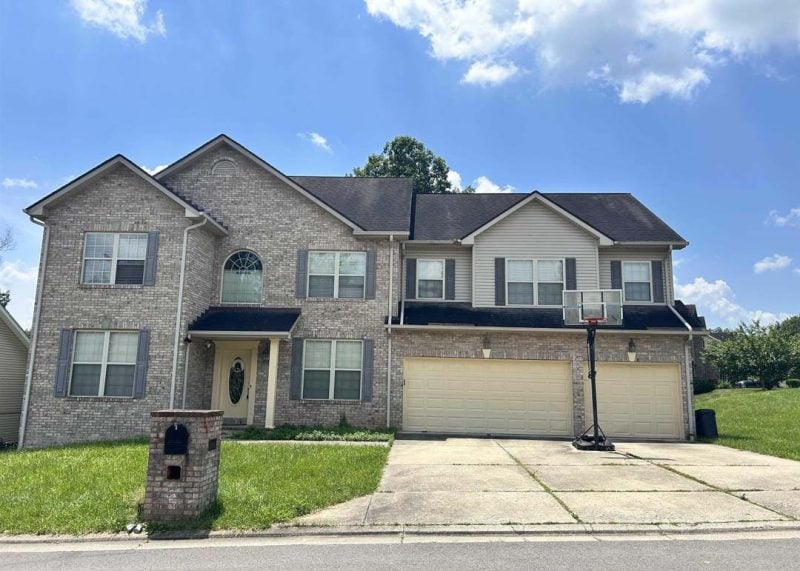
South Charleston stands as one of West Virginia’s most affluent neighborhoods. The area features upscale residential properties with median home values significantly above the city average.
This neighborhood attracts professionals and families seeking luxury housing options. Well-maintained streets and mature landscaping characterize the community’s aesthetic appeal.
South Charleston residents benefit from proximity to West Virginia University and major employers. The location provides convenient access to downtown Morgantown’s amenities and services.
The neighborhood showcases a mix of custom-built homes and established properties. Many residences feature large lots and premium architectural details that justify higher property values.
Local infrastructure includes quality utilities and well-maintained roads. The area’s reputation for property appreciation makes it attractive to real estate investors.
South Charleston maintains its status through consistent property maintenance standards and community pride. The neighborhood’s economic stability reflects the broader prosperity found in Morgantown’s premium residential areas.
7. Suncrest, Morgantown
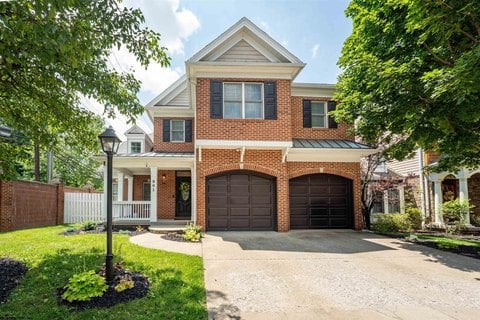
Suncrest stands as one of Morgantown’s most desirable neighborhoods, attracting professionals and families with substantial incomes. The area commands a median home price of $300,000, significantly higher than West Virginia’s state average.
The neighborhood’s proximity to West Virginia University and major medical facilities drives its economic appeal. J.W. Ruby Memorial Hospital and Mon Health Medical Center provide high-paying employment opportunities for residents.
Real estate professionals consider Suncrest one of the hottest markets in Morgantown. The area attracts buyers working in hospital systems and the university, creating consistent demand for housing.
Suncrest offers excellent walkability and maintains a reputation for safety and cleanliness. The well-maintained community features luxury residential developments that appeal to affluent buyers.
Investment experts recommend Suncrest for long-term value due to its stability and steady appreciation rates. The neighborhood’s combination of professional opportunities and family-friendly amenities supports sustained property values.
8. Lost Creek, Harrison County

Lost Creek stands as a small but affluent community in Harrison County, West Virginia. The town maintains a population of 359 residents according to the 2020 census.
This historic community features an unusually large collection of pre-World War II architecture. The preserved buildings contribute to its distinction as one of West Virginia’s older and more historic towns.
Real estate values in Lost Creek rank among the most expensive in West Virginia. The elevated property prices reflect the area’s desirability and economic stability within the state.
The town’s compact size creates an intimate residential environment. Lost Creek consists of just one neighborhood, making it the 225th largest community in West Virginia.
Educational facilities serve the local population through multiple schools. The community supports two elementary schools, one middle school, and one high school for area students.
9. Pine Grove, Monongalia County
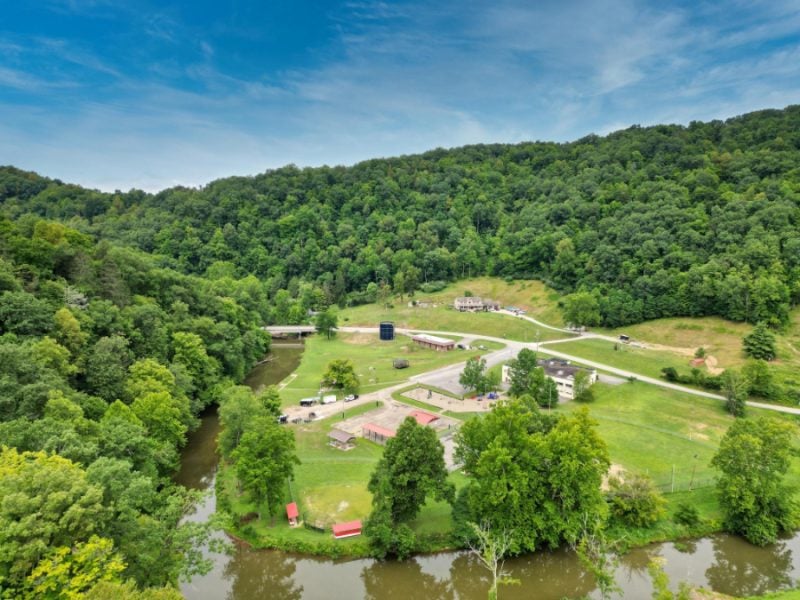
Pine Grove stands as one of Monongalia County’s most affluent residential areas. The neighborhood attracts higher-income residents seeking quality housing in a well-established community.
Monongalia County home prices exceed the state average of $138,399. Pine Grove contributes to this trend with its desirable location and housing stock.
The area benefits from Monongalia County’s overall economic strength. Cheat Lake, also in the county, ranks as West Virginia’s richest city with households earning $161,668 on average.
Pine Grove residents enjoy low crime rates typical of the county. Monongalia County reports just 3.7 incidents per 1,000 residents, creating a safe environment for families.
The neighborhood’s proximity to outdoor recreation adds to its appeal. Residents access hiking trails, fishing spots, and parks throughout the region.
Pine Grove’s combination of safety, natural amenities, and economic stability makes it attractive to affluent buyers.
10. Country Club Hills, Charleston
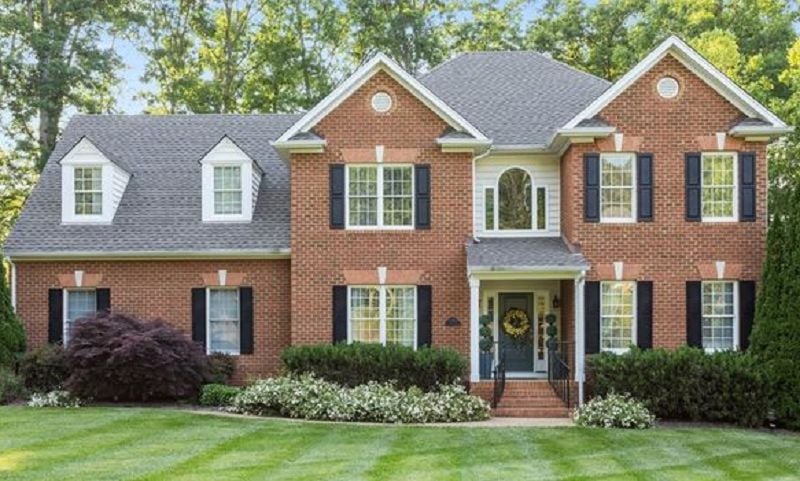
Country Club Hills ranks among Charleston’s most affluent residential areas. This established neighborhood features well-maintained homes with mature landscaping and tree-lined streets.
The area attracts upper-income professionals and families seeking quality housing. Property values remain consistently high compared to other Charleston neighborhoods.
Residents benefit from proximity to country club amenities and recreational facilities. The neighborhood offers easy access to downtown Charleston while maintaining a suburban atmosphere.
Many homes feature larger lots and upscale architectural details. The community appeals to those prioritizing privacy and exclusivity within the capital city.
Country Club Hills provides a stable real estate market with strong property appreciation. The neighborhood’s location and amenities contribute to its desirable status among Charleston’s wealthier residents.
11. Shadowood, Charleston
Shadowood stands as one of Charleston’s most desirable residential neighborhoods. This established community features well-maintained homes with mature landscaping and tree-lined streets.
The neighborhood attracts affluent professionals and families seeking quality housing options. Property values in Shadowood remain consistently strong compared to other Charleston areas.
Residents enjoy convenient access to Charleston’s downtown business district and shopping centers. The location provides easy commuting options for those working in the city center.
Shadowood offers a mix of architectural styles from different decades. Many homes feature spacious lots with established gardens and mature trees that enhance property appeal.
The neighborhood maintains a reputation for safety and community stability. Local amenities and proximity to quality schools make it attractive to families with children.
Property maintenance standards remain high throughout the area. This contributes to sustained home values and neighborhood desirability among Charleston’s affluent residents.
12. Cedar Grove, Kanawha County
Cedar Grove sits along the Kanawha River in Kanawha County, representing one of the area’s more affluent communities. The town maintains a population of approximately 800 residents.
This historic settlement dates back to 1773, making it the oldest community in the Upper Kanawha Valley. Cedar Grove was officially incorporated in 1902.
The town offers a suburban-rural lifestyle that attracts higher-income residents seeking tranquility near Charleston. Most residents own their homes, contributing to the area’s stable property values.
Cedar Grove’s location provides convenient access to Charleston’s employment opportunities while maintaining a peaceful residential environment. The community sits at the mouth of Kelly’s Creek along the Kanawha River.
The town’s scenic river setting and established neighborhoods make it attractive to professionals and families. Cedar Grove’s combination of historic charm and modern amenities supports its position among West Virginia’s wealthier communities.
13. Bryan Place, Huntington
Bryan Place stands as one of Huntington’s most established affluent neighborhoods. The area features well-maintained homes with mature landscaping and tree-lined streets.
Property values in Bryan Place typically exceed the city’s median home price of $138,399. The neighborhood attracts professionals and families seeking quality housing in a stable community setting.
Residents enjoy proximity to downtown Huntington while maintaining a quieter residential atmosphere. The area offers convenient access to local amenities and business districts.
Bryan Place homes often feature traditional architectural styles with updated interiors. Many properties include spacious lots and established gardens that contribute to the neighborhood’s character.
The community maintains strong property values through active homeowner participation and neighborhood standards. Local investment in home improvements and maintenance supports continued appreciation in the area.
14. Spring Hill, Huntington
Spring Hill stands as one of Huntington’s most desirable neighborhoods, attracting families and professionals seeking quality living. The area maintains a family-friendly atmosphere with strong community connections.
The neighborhood benefits from its strategic location near downtown Huntington. Residents enjoy easy access to urban amenities while maintaining a suburban feel.
Spring Hill features well-maintained homes and active neighborhood associations. The community spirit remains strong, with neighbors actively participating in local events and initiatives.
Property values in Spring Hill reflect the area’s desirability among homebuyers. The neighborhood attracts residents who value both convenience and community engagement.
The diverse population contributes to Spring Hill’s welcoming environment. Families appreciate the neighborhood’s reputation for safety and its proximity to schools and recreational facilities.
Spring Hill represents a balanced choice for those seeking suburban comfort within reach of Huntington’s city center.
15. Oakwood, Clarksburg
Oakwood represents one of Clarksburg’s more affluent residential areas. This neighborhood features well-maintained homes with mature landscaping and tree-lined streets.
The area attracts middle to upper-middle-class families seeking quality housing options. Property values in Oakwood typically exceed Clarksburg’s city average.
Most homes in the neighborhood were built between the 1950s and 1980s. The housing stock includes ranch-style homes, split-levels, and traditional two-story residences.
Oakwood benefits from its proximity to local amenities and schools. The neighborhood maintains a suburban character with larger lot sizes compared to downtown areas.
Residents enjoy relatively quiet streets and established community connections. The area’s location provides convenient access to Clarksburg’s business district and major transportation routes.
Property maintenance standards remain high throughout the neighborhood. This contributes to sustained home values and neighborhood desirability.
16. East Park, Weirton
East Park stands as one of Weirton’s most desirable residential areas. The neighborhood attracts affluent residents seeking quality housing in the eastern part of the city.
Property values in East Park exceed the city’s median home price of $104,971. Well-maintained homes and established infrastructure contribute to the area’s appeal among higher-income families.
The neighborhood benefits from its location within Weirton, which ranks as the wealthiest city in Hancock County. Median household income reaches $52,775 throughout the broader community.
East Park features tree-lined streets and spacious lots that appeal to professionals and retirees. The area maintains a quiet residential character while providing convenient access to local amenities.
Residents appreciate the neighborhood’s stable property values and low crime rates. The combination of affordable living costs compared to national averages and quality housing options makes East Park attractive to discerning buyers.
17. North Hills, Wheeling
North Hills stands as one of West Virginia’s most affluent communities. This neighborhood demonstrates significant economic prosperity within the Wheeling metropolitan area.
The area attracts residents seeking upscale living in a well-established community. North Hills features quality housing stock and maintained neighborhood infrastructure.
Property values in North Hills reflect its desirable status among Wheeling’s residential areas. The neighborhood’s location provides convenient access to both local amenities and regional transportation networks.
Residents benefit from the area’s proximity to Wheeling’s commercial districts while enjoying a more suburban residential environment. The neighborhood maintains its appeal through consistent property maintenance and community standards.
North Hills represents the type of established, higher-income residential area that contributes to Wheeling’s economic diversity. The community continues to attract professionals and families seeking quality housing options in the Ohio Valley region.
18. Fairmont Heights, Marion County
Fairmont Heights represents one of the more affluent residential areas within Marion County. The neighborhood sits in proximity to Fairmont, the county seat established in 1820.
Marion County offers diverse living options according to recent assessments. Fairmont Heights benefits from its location near educational institutions and the Monongahela River valley.
The area attracts residents seeking elevated living standards within the region. Property values in Fairmont Heights tend to exceed county averages due to its desirable location and amenities.
Proximity to Fairmont State University provides educational and cultural benefits. The neighborhood maintains access to Marion County’s infrastructure while offering a more upscale residential environment.
Fairmont Heights residents typically enjoy higher household incomes compared to surrounding areas. The community combines suburban comfort with accessibility to regional employment centers and transportation networks.
19. Grandview, Morgantown
Grandview stands as one of Morgantown’s most desirable residential neighborhoods. The area features well-established homes with mature landscaping and tree-lined streets.
Property values in Grandview consistently rank above the city average. The neighborhood attracts professionals and families seeking quality housing in a stable community.
Residents enjoy convenient access to downtown Morgantown and West Virginia University. The location provides easy connectivity to major employment centers throughout the region.
The neighborhood maintains a quiet suburban character while remaining close to urban amenities. Local parks and recreational facilities serve the community’s outdoor needs.
Grandview’s housing stock includes a mix of architectural styles from different decades. Many properties feature larger lots compared to newer developments in the area.
The neighborhood benefits from Morgantown’s strong job market and educational institutions. This economic stability supports consistent property values and attracts long-term residents.
20. Highland Estates, Charleston
Highland Estates stands as one of Charleston’s most desirable residential areas. The neighborhood features well-maintained properties with mature landscaping and established tree lines.
Home values in Highland Estates typically exceed Charleston’s average of $138,399. Properties range from mid-century ranch homes to contemporary two-story residences. Many homes sit on larger lots compared to other Charleston neighborhoods.
The area attracts professionals and families seeking quality housing in the state capital. Highland Estates offers convenient access to downtown Charleston while maintaining a suburban atmosphere.
Residents benefit from proximity to Charleston’s business district and government facilities. The neighborhood’s location provides easy access to major roadways and shopping centers.
Highland Estates represents solid real estate investment potential within West Virginia’s capital city market. The area maintains consistent property values and attracts buyers looking for established neighborhoods.
21. Sagamore Hills, Charleston
Sagamore Hills represents one of Charleston’s most established residential neighborhoods. The area features well-maintained homes with mature landscaping and tree-lined streets.
This neighborhood attracts professionals and families seeking quality housing within Charleston’s city limits. Property values in Sagamore Hills remain stable compared to other Charleston areas.
The location provides convenient access to downtown Charleston and major employment centers. Residents benefit from proximity to shopping districts and recreational facilities.
Sagamore Hills offers a mix of architectural styles, including mid-century homes and newer construction. The neighborhood maintains its residential character while providing modern amenities.
Local schools serve the area, making it attractive to families with children. The community features sidewalks and green spaces that encourage outdoor activities.
Property taxes in Sagamore Hills align with Charleston’s municipal rates. The neighborhood’s infrastructure includes established utilities and well-maintained roads.
22. West Hills, Parkersburg
West Hills represents one of Parkersburg’s most desirable residential areas. The neighborhood sits on elevated terrain overlooking the city, providing residents with scenic views and a sense of separation from urban activity.
Home values in West Hills typically exceed Parkersburg’s average. The area features a mix of established properties and newer constructions that appeal to professionals and families seeking quality housing options.
The neighborhood’s location offers convenient access to downtown Parkersburg while maintaining a suburban atmosphere. Tree-lined streets and well-maintained properties characterize the area’s residential appeal.
West Hills attracts residents who value privacy and space. The neighborhood’s higher elevation and established nature contribute to its reputation as a sought-after address within the Parkersburg metro area.
23. Cherry Hill, Charleston
Cherry Hill stands as one of Charleston’s most desirable residential areas. This established neighborhood attracts professionals and families seeking quality housing options within the state capital.
The area features well-maintained homes with mature landscaping. Property values reflect the neighborhood’s appeal to middle and upper-middle-class residents.
Cherry Hill benefits from its proximity to downtown Charleston’s business district. Residents enjoy convenient access to employment centers and cultural amenities.
The neighborhood offers a mix of architectural styles from different decades. Many homes sit on spacious lots with established trees and gardens.
Local amenities include nearby parks and recreational facilities. The area provides easy access to Charleston’s shopping and dining options.
Cherry Hill represents solid investment potential within Charleston’s real estate market. The neighborhood maintains its reputation as a stable residential community.
24. Riverbend, Huntington
Riverbend represents one of Huntington’s more affluent residential areas, situated along the Ohio River. The neighborhood features well-maintained homes with river access and scenic views.
Property values in Riverbend typically exceed Huntington’s median home price of $138,399. Many residences showcase traditional architecture with modern updates and expansive lots.
The area attracts professionals and retirees seeking a quieter lifestyle while maintaining proximity to downtown Huntington. Riverbend’s location provides easy access to recreational activities along the riverfront.
Local amenities include private boat docks and walking trails. The neighborhood maintains a strong sense of community through organized events and volunteer activities.
Riverbend’s real estate market remains stable with consistent demand from buyers seeking riverfront properties. The area’s natural setting and established infrastructure contribute to its desirability among Huntington’s higher-income residents.
25. Twin Oaks, Martinsburg
Twin Oaks represents one of Martinsburg’s more affluent residential areas. The neighborhood features well-maintained homes with larger lot sizes than many urban West Virginia communities.
Property values in Twin Oaks typically exceed Martinsburg’s median home price of $290,254. The area attracts families and professionals seeking quality housing in a established neighborhood setting.
Residents benefit from Martinsburg’s proximity to the Washington D.C. metropolitan area job market. This location advantage supports higher household incomes compared to much of West Virginia.
The neighborhood maintains tree-lined streets and suburban character. Twin Oaks offers a quiet residential environment while remaining accessible to Martinsburg’s commercial districts and transportation routes.
Housing stock consists primarily of single-family homes built in recent decades. The area appeals to buyers seeking modern amenities in a stable community setting.
26. Mountain View, Beckley
Mountain View represents one of Beckley’s more established residential areas. This neighborhood attracts families and professionals seeking quality housing options within the city limits.
The area features a mix of single-family homes with varying architectural styles. Properties typically include well-maintained yards and mature landscaping that adds to the neighborhood’s appeal.
Beckley ranks as West Virginia’s ninth largest community with a population of 16,576 people. The city supports six distinct neighborhoods, with Mountain View being among the more desirable locations.
Home values in this neighborhood reflect the broader Beckley market trends. The area benefits from the city’s infrastructure and local amenities while maintaining a residential character.
Mountain View offers convenient access to Beckley’s business district and major transportation routes. This accessibility contributes to the neighborhood’s standing among the city’s better residential options.
27. Cottage Hills, Clarksburg
Cottage Hills represents one of Clarksburg’s more affluent residential areas. The neighborhood features well-maintained homes on tree-lined streets with established landscaping.
Property values in Cottage Hills typically exceed Clarksburg’s median home price. The area attracts professionals and families seeking quality housing in a stable community setting.
The neighborhood benefits from its proximity to downtown Clarksburg while maintaining a suburban character. Residents enjoy access to local amenities and services within a short drive.
Cottage Hills homes often feature traditional architectural styles with updated interiors. The area’s housing stock includes both mid-century and newer construction properties.
The neighborhood’s location provides convenient access to major transportation routes. This connectivity makes it attractive to commuters working in the broader North Central West Virginia region.
28. South Ridge, Martinsburg
South Ridge represents one of Martinsburg’s more affluent residential areas in West Virginia’s Eastern Panhandle. The neighborhood features well-maintained homes with property values above the state average.
Located in Jefferson County, South Ridge benefits from its proximity to the Virginia and Maryland borders. Many residents commute to the greater Washington D.C. metropolitan area for employment opportunities.
The neighborhood attracts middle to upper-middle-class families seeking suburban living. Home values in the area reflect the desirability of the location and quality of housing stock.
South Ridge offers a mix of single-family homes built primarily in recent decades. The community maintains residential streets with established landscaping and neighborhood amenities.
Property values in South Ridge contribute to Martinsburg’s position as one of West Virginia’s more expensive housing markets. The area appeals to professionals and families looking for quality housing options.
29. Maplewood, Charleston
Maplewood stands as one of Charleston’s established residential neighborhoods with well-maintained properties and tree-lined streets. The area features a mix of mid-century and contemporary homes that attract middle to upper-middle class families.
Property values in Maplewood typically exceed Charleston’s average home price of $138,399. Many homes in the neighborhood range from $180,000 to $300,000, reflecting the area’s desirable location and housing quality.
The neighborhood benefits from its proximity to downtown Charleston while maintaining a suburban feel. Residents enjoy access to local parks, schools, and shopping centers within a short drive.
Maplewood’s appeal stems from its mature landscaping and established community atmosphere. The area draws professionals and families who value stability and convenient access to Charleston’s amenities.
30. Lakewood, Morgantown
Lakewood stands as one of Morgantown’s more affluent residential areas. The neighborhood features well-maintained single-family homes with larger lot sizes than typical city properties.
Property values in Lakewood reflect its desirable location and quality housing stock. Most homes were built in the mid to late 20th century with traditional architectural styles.
The area attracts professionals and families seeking suburban living within city limits. Residents benefit from proximity to West Virginia University while maintaining distance from campus activity.
Lakewood offers tree-lined streets and established landscaping throughout the neighborhood. The community maintains a quiet residential character with minimal commercial development.
Local amenities include nearby parks and recreational facilities. The neighborhood provides convenient access to Morgantown’s downtown area and major transportation routes.
Housing in Lakewood typically commands premium prices compared to other Morgantown neighborhoods. The area’s stability and desirable location contribute to strong property values over time.
Key Factors That Shape Affluent Neighborhoods in West Virginia
Affluent neighborhoods in West Virginia share common characteristics that drive property values and attract higher-income residents. Geographic location, industry presence, and quality infrastructure form the foundation of these prosperous communities.
Real Estate Trends
West Virginia’s wealthiest neighborhoods benefit from strategic positioning along major transportation corridors and proximity to economic centers. Properties in areas like Jefferson County and the greater Charleston region command premium prices due to their accessibility to Washington D.C. and regional business hubs.
Mountain views and riverfront access significantly impact property values. Neighborhoods overlooking the Potomac River or nestled in the Appalachian foothills attract buyers seeking both luxury and natural beauty.
Historic districts in cities like Wheeling and Lewisburg maintain high property values through preservation efforts and architectural significance. These areas combine heritage charm with modern amenities.
Low property taxes compared to neighboring states make West Virginia attractive to affluent buyers. This tax advantage allows residents to purchase larger homes and invest more in property improvements.
Economic Impact of Local Industries
Energy sector employment drives wealth concentration in specific regions. Coal mining executives and natural gas professionals cluster in neighborhoods near major extraction sites and corporate headquarters.
Government employment creates stable affluent communities, particularly in the Eastern Panhandle where federal workers commute to Washington D.C. These residents bring consistent high incomes and professional networks.
Tourism and hospitality industries support luxury neighborhoods in resort areas. Ski resorts, golf courses, and outdoor recreation facilities attract wealthy seasonal residents who invest in high-end properties.
Healthcare systems anchor affluent neighborhoods around major medical centers. Physicians, specialists, and healthcare administrators form concentrated wealthy communities in cities like Morgantown and Charleston.
Community Amenities and Lifestyle
Private schools and high-performing public school districts define premium neighborhoods. Areas with top-rated educational institutions attract families willing to pay higher housing costs for quality education access.
Country clubs and golf courses serve as neighborhood anchors for affluent communities. These facilities provide social networks and recreational opportunities that justify premium housing prices.
Proximity to cultural venues, fine dining, and shopping centers enhances neighborhood desirability. Areas near universities often offer sophisticated amenities that appeal to educated professionals.
Low crime rates and well-maintained infrastructure characterize wealthy neighborhoods. Regular police patrols, landscaped streets, and updated utilities create environments that support high property values.
Demographic and Economic Insights
West Virginia’s wealthiest neighborhoods demonstrate significantly higher household incomes, educational achievement, and professional employment rates compared to state averages. These communities benefit from proximity to major economic centers and specialized industry clusters.
Household Income Statistics
Cheat Lake in Monongalia County leads West Virginia’s affluent communities with an average household income of $161,668 as of 2023. This income level represents more than triple the state’s median household income.
Charles Town and Bridgeport consistently rank among the top wealthy cities in the state. These communities benefit from their strategic locations near major metropolitan areas and economic corridors.
Income Distribution Patterns:
- Top-tier neighborhoods: $120,000-$161,000+ annually
- Upper-middle communities: $80,000-$120,000 annually
- State median: Approximately $50,000 annually
The income disparity between wealthy neighborhoods and the state average reflects West Virginia’s economic challenges. The state ranks as the third poorest in the United States with a per capita income of $23,450.
Educational Attainment in Wealthy Areas
Affluent West Virginia neighborhoods show substantially higher rates of bachelor’s degree attainment compared to state averages. These communities attract educated professionals and families seeking quality living environments.
University towns like those near West Virginia University in Monongalia County demonstrate particularly high educational achievement rates. Faculty, researchers, and graduate students contribute to elevated degree completion statistics.
Educational Characteristics:
- Bachelor’s degree rates exceed state averages by 20-30 percentage points
- Graduate and professional degrees are common
- Access to quality K-12 schools attracts families
The concentration of educated residents creates a self-reinforcing cycle. Higher education levels attract businesses and employers seeking skilled workforces.
Employment Sectors
Professional services, healthcare, education, and government employment dominate wealthy West Virginia neighborhoods. These sectors provide stable, well-compensated positions that support higher living standards.
Technology and energy sectors contribute significantly to affluent communities. Natural gas, chemical processing, and emerging tech industries create high-paying opportunities for skilled workers.
Key Employment Areas:
- Healthcare: Hospitals, medical practices, pharmaceutical companies
- Education: Universities, research institutions, administrative roles
- Professional Services: Legal, financial, consulting firms
- Energy: Natural gas, chemical processing, renewable energy
Government employment at federal, state, and local levels provides economic stability. Many wealthy neighborhoods benefit from proximity to government centers and public sector job opportunities.





